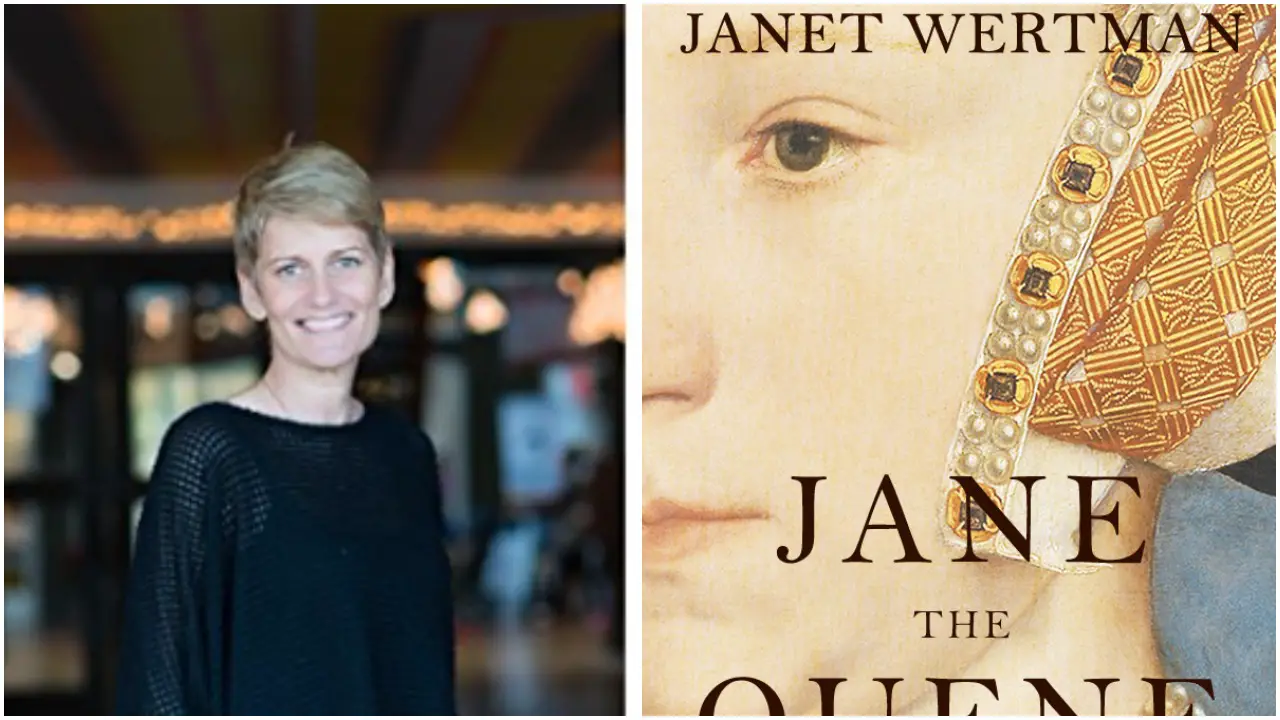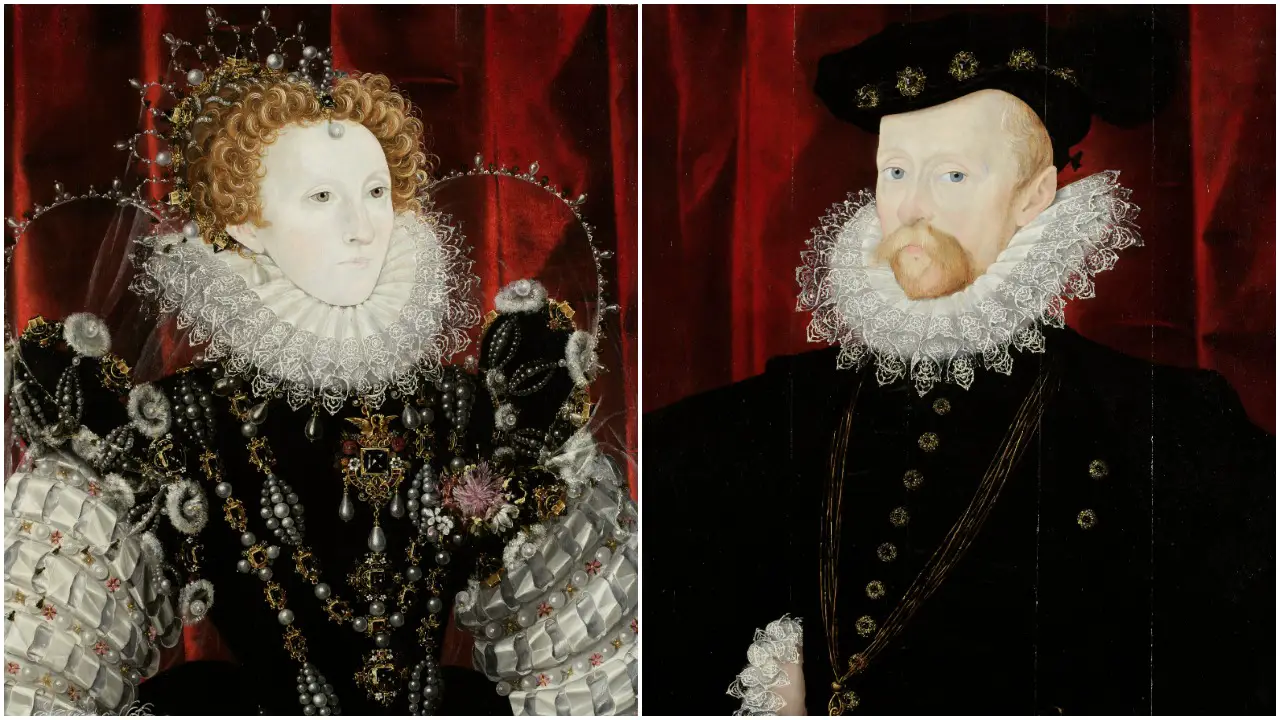 On this day in history, 9th May 1509, the remains of Henry VII, who had died at Richmond Palace on 21st April 1509, were taken to Old St Paul's.
On this day in history, 9th May 1509, the remains of Henry VII, who had died at Richmond Palace on 21st April 1509, were taken to Old St Paul's.
Here's an account by James Peller Malcolm (1767-1815) in Londinium redivivum:-
"On the 9th of May, 1509, the body of Henry VII. was placed in a chariot, covered with black cloth of gold, which was drawn by five spirited horses, whose trappings were of black velvet, adorned with quishions of gold. The effigies of his Majesty lay upon the corpse, dressed in his regal habiliments. The carriage had suspended on it banners of arms, titles, and pedigrees. A number of prelates preceded the body, who were followed by the deceased king's servants; after it were nine mourners. Six hundred men bearing torches surrounded the chariot.
The chariot was met in St. George's Fields [he died at Windsor*] by all the priests and clergy of London and its neighbourhood; and at London Bridge by the Lord Mayor, aldermen, and common council, in black. To render this awful scene sublimely grand, the way was lined with children, who held burning tapers: those, with the flashes of great torches, whose red rays, darting in every direction upon glittering objects, and embroidered copes, showing the solemn pace, uplifted eyes, and mournful countenances, must have formed a noble picture. The slow, monotonous notes of the chaunt, mixed with the sonorous tones of the great bells, were not less grateful to the ear. When the body had arrived at St. Paul's, which was superbly illuminated, it was taken from the chariot and carried to the choir, where it was placed beneath a hearse arrayed with all the accompaniments of death. A solemn mass and dirge were then sung, and a sermon preached by the Bishop of Rochester. It rested all night in the church. On the following day the procession recommenced in the same manner, except that Sir Edward Howard rode before, on a fine charger, clothed with drapery on which was the king's arms.
We will now suppose him removed by six lords from his chariot to the hearse prepared for him, formed by nine pillars, set full of burning tapers, enclosed by a double railing; view him placed under it, and his effigies on a rich pall of gold; close to him the nine mourners; near them knights bearing banners of saints, and surrounded by officers of arms. The prelates, abbot, prior, and convent, and priests, in measured paces, silently taking their places; when, breaking through the awful pause, Garter King-at-Arms cried, with an audible voice, 'Pray for the soul of the noble prince, Henry the Seventh, late king of this realm.' A deep peal from the organ and choir answers in a chaunt of placebo and the dirge; the sounds die away, and with them the whole assembly retires."
Here is the "Narrative account (brief) of the interment of Henry VII" and another account from Letters and Papers:
"After the body had been embalmed, &c., it was brought out of the privy chamber to the great chamber and rested there three days, on each day three masses and dirges being sung by a mitred prelate; then carried to the hall for three days with like services; then to the chapel for three days. On Wednesday, 9 May, the corse was brought in a chariot drawn by five great coursers (trappings and attendance briefly described) from Richmond to St. George's in the Field (met there by clergy), London Bridge (met there by the mayor, &c.) and St. Paul's, where it was placed in the choir under a goodly hearse, and there was mass and a sermon by the bp. of Rochester, "during which time the King's household, with the mourners, reposed them in the bishop's palace." Next day the corse was removed to Westminster, Sir Edward Howard, on a courser trapped with the arms of the defunct, bearing the King's banner. There it was set under "a curious hearse made of 9 principalles full of lights which were all lighted." Brief description of hearse and ceremonies. Next day, after three masses and the offerings, the choir sang Libera me, the body was put in the earth, the Lord Treasurer, Lord Steward, Lord Chamberlain, Lord Treasurer and Comptroller of the King's household "brake their staves and cast them into the grave," Garter proclaimed Henry VIII and all the mourners and attendants "departed to the Palace where they had a great and sumptuous feast."
" "This is the manner of bringing of King Henry's corpse the 7th, from Richmonde, where he departed to God the 21th day of April the 24th year of his reign, unto St. Pawles Churche in London; and also of his conveyance from thence to the abbey of Westminster, where he, a prince most royal, was solemnly interred, which was the tenth day of May the first year of the reign of King Henry the Eighth, 1485 (sic)."
First came riding through the city of London the sword bearer and vice-chamberlain of London with two of the masters of the Bridgehouse to set the crafts in array. Then came the King's messengers, two and two "with their boxes at their breasts," trumpeters and minstrels. Then the Florentines, Venetians, Portingals, Spaniards, Frenchmen, Easterlings. Then gentlemen ushers, chaplains having no dignity, squires for the Body. Then the aldermen and sheriffs. Then came riding two heralds in coat armour, a knight mourner on a courser trapped with black velvet bearing the King's standard, "whose name is Sir Edward Darrell, after whom came knights," chaplains of dignity as deans and other, the King's Council and Knights of the Garter not being lords, the Chief Justice of Common Pleas, Chief Baron, Chief Justice of King's Bench, Master of the Rolls; then the Crowched Friars on foot, the four orders of Friars singing; the canons of all places in London singing; the King's chapel in their surplices and grey amices singing. Then came riding all the temporal lords and barons on the left hand and the abbots and bishops on the right. Then rode Sir Davie Owen bearing a steel helmet with a gold crown, Sir Edward Howard (second son of the Earl of Surrey, treasurer) armed with the King's harness, his face discovered and bearing the King's battle-axe head downward resting on his foot; Sir Thomas Fynes bearing a rich armour embroidered with the arms of England; the Mayor of London carrying his mace. Then came the chariot bearing the corse (panoply and attendance described). Then followed the Duke of Buckingham, Earls of Arundel, Northumberland, Shrewsbury, Surrey, Essex, "and other, to the number of nine, being Knights of the Garter"; then nine henchmen on coursers trapped with black velvet the three foremost bearing "three caps of maintenance which three Popes had sent the King," the next three bearing rich swords point downwards, the seventh bearing "a target of the arms of England otherwise called a shield crowned," the eighth a helmet with a lion of gold on it, the ninth a spear covered with black velvet. Then followed Sir Thomas Brandon, Master of the Horse, leading a courser trapped with black velvet embroidered with the arms of England; then Lord Darcy, Captain of the Guard, with the Guard and many other gentlemen.
At the west door of St. Paul's the bp. of London revested and mitred, received the corse. Describes how it was borne into the church, how the bp. officiated, assisted by the abbots of St. Albans and Reading. The Lords then departed to the bp.'s palace, watch was kept by the corse, and on the morrow were sung three masses by the Dean of Powles, the bp. of Lincoln, and the bp. of London; and the bp. of Rochester preached. Then all went to dinner and, at their return, before 1 p.m., the corse was solemnly borne back to the chariot and conveyed through Fleet Street and Charing Cross, where the abbots of Westminster, St. Albans, Reading and Winchcombe, revested and mitred, with the whole convent of Westminster, met and accompanied it to the west door of Westminster abbey; and there the abps. of Canterbury and York received and censed it. Subsequent service, at which the bp. of Norwich read the first lesson, the bp. of Lincoln the second, and the abp. of Canterbury the third. The lords then departed to the King's palace, all save certain knights appointed to watch. On the morrow the lords were in the church before six o'clock, masses were sung (1) by the abbot of Westminster, (2) by the bp. of Winchester with the abbot of St. Albans as his deacon and abbot of Reading as sub-deacon, and (3) by the abp. of Canterbury with the bp. of Lincoln as deacon and bp. of Norwich as sub-deacon. Describes the subsequent ceremony minutely, from a herald's point of view, noting how the Earl of Derby and the Earl of Aroun "otherwise called the Scottish lord" stood together, how Sir Edward Howard rode into the church, the offerings made, &c."
The king was buried beside his wife, Elizabeth of York, in Westminster Abbey on 11th May 1509.
Notes and Sources
*Although the note in Londinium redivivum states that the king died at Windsor, he actually died at Richmond Palace and was moved from there to St George's in the Field.
-
- Malcolm, Peller James (1802) Londinium redivivum; or, An antient history and modern description of London Volume 1 - This can be read at https://archive.org/stream/londiniumrediviv00malc#page/n7/mode/2up, p227-228.
- 'Henry VIII: May 1509, 1-14', in Letters and Papers, Foreign and Domestic, Henry VIII, Volume 1, 1509-1514, ed. J S Brewer (London, 1920), pp. 8-24. British History Online http://www.british-history.ac.uk/letters-papers-hen8/vol1/pp8-24 [accessed 9 May 2017].



Leave a Reply